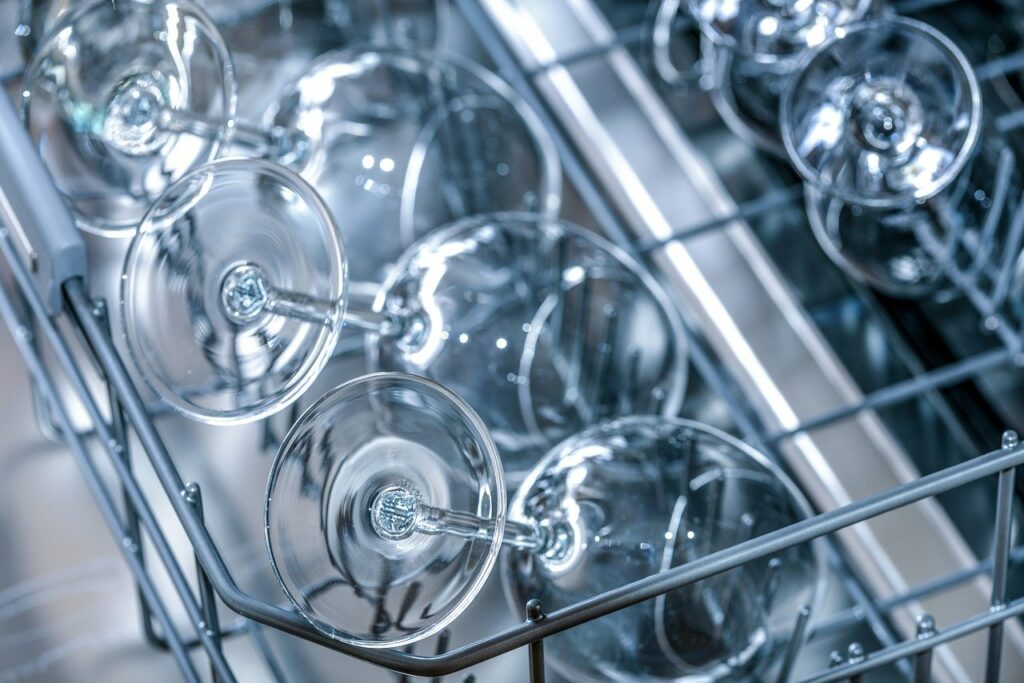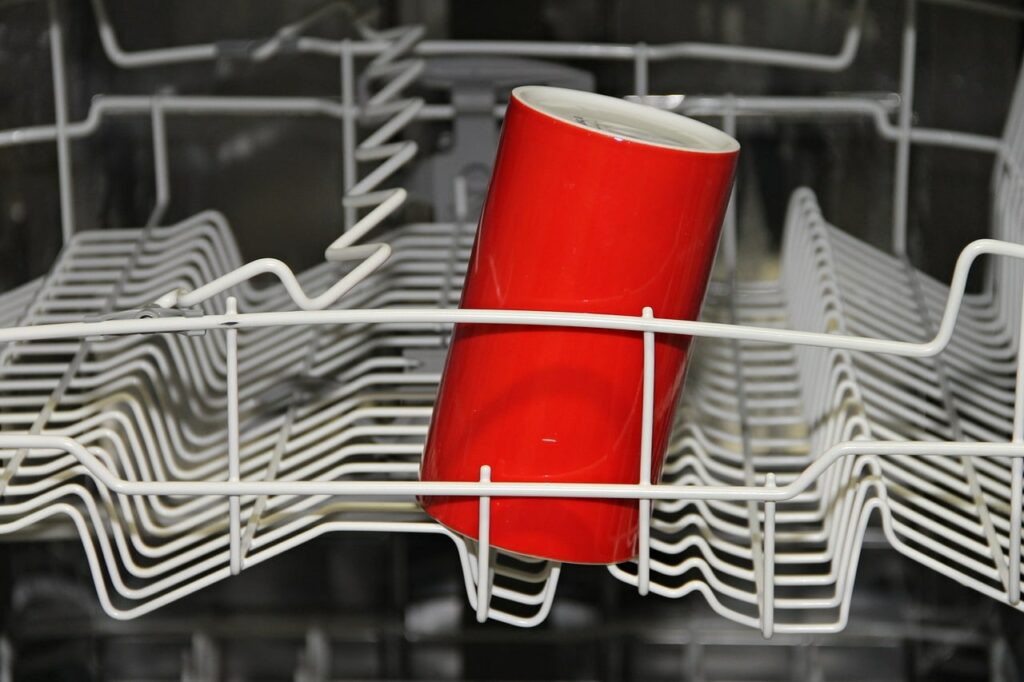Having sparkling clean dishes does not need wasting gallons of water. And while everyone has an opinion on whether you should handwash or use a dishwasher, you can save water regardless of your approach. Small changes, like skipping the pre-rinse cycle or using less detergent, can save a lot of water.
Here are a few water-saving tips that will still leave your dishes shining.

Tips for how to save water while washing dishes
Dishwashing isn’t exactly top on most people’s list of enjoyable hobbies. It’s inconvenient, dirty, and raises your water cost. As a result, many people have gone so far as to delegate this task to a machine (a dishwasher). There are, however, methods to make the task more doable and cost-effective.
1. Scrape dishes thoroughly
While it can be tempting to let the sprayer do the work for you, refrain from using water first and scrape your plates while they’re still dry. The solid bits should then be thrown away. By never allowing food to block the disposal in the first place, you’ll save the water that would have been required to operate it.
2. Use warm water
There’s something to be said to ease with which hot water can readily remove garbage and old food particles from your plates. Using the strength of warm water to loosen any remaining stuck-on food can save you time, effort, and even water.
3. Keep the dishes close
Place your scraped dishes in a pile next to the sink instead of running your water and then reaching for tableware one by one while hand washing your dishes. That way, you won’t waste time reaching for all the dishes strewn about as your faucet continues to run.
4. Choose the right cleaning tools
Scrubbing your dishes is more difficult when you don’t have good sponges, brushes, scrubbers, or soap. Cleaning dishes properly requires the use of the right cleaning materials. Your soap should be concentrated enough that it doesn’t wash away after cleaning a dish, and you’ll need an absorbent sponge that:
- Holds on to soap without rinsing it away fast
- Allows soapsuds to accumulate
- It is robust enough to remove even the toughest food particles
- It is mild enough to avoid causing harm to your dishes
Dishwashing is easier with the right cleaning equipment, saving time and water.
5. Turn off the tap
If you’re hand-washing your dishes, wetting a few plates at a time and then turning off the water while you clean them might be useful. Turn on the faucet again when they’re ready to be rinsed, and repeat as needed. This saves gallons of water that would otherwise be wasted when scrubbing.
6. Skip the pre-rinse
A pre-rinse is normally unneeded if you use a dishwasher. Scraping the particles off will suffice because your dishwasher can tolerate some residue. Certain detergents are designed to adhere to food and may perform better if you don’t rinse.
7. Make sure you’re loading your dishwasher correctly
Keep water flow in consideration while filling your dishwasher. The less time it takes to clean, the easier it is for water to reach each dish. Larger objects should be placed on the sides and rear of the dishwasher to avoid blocking water from reaching those hard-to-reach dishes. So that detergent reaches the top or dirtier side of the dish, place it in the machine’s center.

Hands versus machine
To begin with, hand-washing dishes should be the preferred method. Washing dishes by hand gives some physical exercise and an opportunity for the mind to focus on something other than what is on television in this age of increasing laziness. Believe it or not, some people find the activity to be calming since it allows them to let their minds wander. In addition, the effort of lifting, soaping, and washing those dirty dishes has an extra benefit: it burns calories!
Second, hand-washing dishes saves water and power. This will decrease water and electricity bills, which everybody will appreciate.
Those who complain that dish detergent wreaks havoc on their hands and manicures can be worn rubber gloves. Rubber gloves also give traction, preventing wet dinnerware from slipping and breaking.
Wash dishes in groups
The sight of dirty plates, pots, pans, glasses, and utensils in the kitchen sink can be overwhelming. Dread and laziness are common reactions to this negative feeling. However, the process will be more doable and efficient if you have a strategy and split the dirty items into categories.
What criteria should one use to choose which items should be washed first?
The answer is simple: start with the cleanest objects and work your way up to the dirtier ones. Make the most difficult ones last, so you have more room in the sink to manage.
Washing dishes made easy.
To break down the work of dishwashing, follow these steps. First, when washing dishes, remember not to let the water run:
- Soap and rinse all liquid holders and utensils first since they are the cleanest among the soiled. Glasses, wine glasses, mugs, knives, forks, and spoons fall under this category. Saucers and placemats are also included in this category because they seldom become filthy.
- Next, soap and rinse larger and dirtier things, such as plates and bowls. Any dish that holds food, such as each diner’s plate, soup bowls, salad bowls, and the like, falls under this category.
- Pots and pans for cooking are larger objects requiring more elbow grease. As a result, they are usually cruddy and require extra scrubbing. All other objects have been cleaned at this point, so there is more room in the sink to conduct the scrubbing. This also ensures that the muck and oil from the dirtiest objects won’t dirty the others because they were previously cleaned and placed elsewhere.
Remember to clean and wash the sink afterward. Cockroaches will not be able to enter the kitchen if you do this.

Jay
Jay is a health and wellness enthusiast with expertise in water quality and nutrition. As a knowledgeable advocate for holistic well-being, Jay successfully manages Type 2 Diabetes through informed lifestyle choices. Committed to sharing reliable and authoritative insights, Jay combines firsthand experience with a passion for enhancing health."

